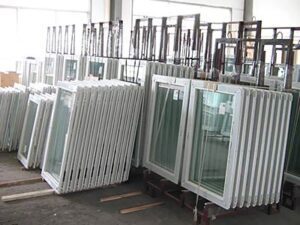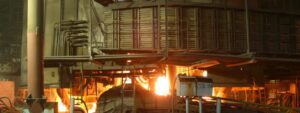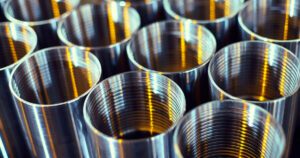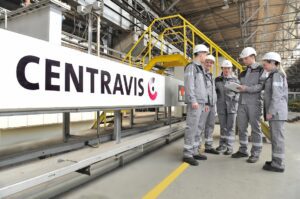
Despite the significant demand for windows to replace those damaged as a result of the armed aggression of the Russian Federation in Ukraine, their production volume fell three times compared to 2021, Oleksiy Bubnov, executive director of the Association of Window and Facade Market Participants (AUROF), told Interfax-Ukraine .
“According to our data, 150-160 thousand structures were produced in May, 170-180 thousand in June, 220-250 thousand in July. There is a positive trend, but compared to 2021, the volume of window production fell three times,” he said.
At the same time, the expert added that these data do not include the number of double-glazed windows that were produced to replace damaged windows, where the frames themselves survived.
“The industry will be able to operate at full capacity if there is glass and raw materials for the production of profiles. For other components of the window (accessories, components for double-glazed windows), everything is available and in sufficient quantity. And, of course, it will be necessary to select workers, because today all companies work in one shift,” Bubnov said.
Considering the acuteness of the issue of restoring the housing stock in the country, he proposes to consider the issue of granting a deferment from conscription to the Armed Forces of Ukraine for specialists in specialties that are critical for the window industry.
The expert named a number of other problems that need to be solved in order to launch the market at full capacity.
He, in particular, recalled that the only producer of PVC raw materials for the production of profiles, Karpatneftekhim (Kalush), has not been operating since the beginning of the war.
As reported, the Prosecutor General’s Office recently transferred the arrested corporate rights of Karpatneftekhim to the management of ARMA, but there is no information about the timing of the resumption of its work.
“The situation is absurd: national profile producers have to buy raw materials abroad and pay a protective duty of 12% on PVC raw materials, adopted in support of Karpatneftekhim. We propose to cancel it at this stage, at least until it is restored in full production,” says Bubnov.
About 80% of glass before the war was supplied from Russia and Belarus. “Since the beginning of the war, the window industry has refused any trade relations with the aggressor country and its accomplice. There remains the opportunity to buy glass in European countries, in Turkey and Azerbaijan,” he explained.
At the same time, Bubnov said, logistically, such deliveries are possible only by land, by special vehicles, the so-called “jumbos” (for transporting large-format glass), which go empty for loading, but are forced to stand in queues at customs.
The Executive Director of AUROF proposes to provide a simplified procedure – the “green corridor” – for vehicles following the glass on exit from Ukraine and at the entrance to the country.
The risk factor, the expert said, which could slow down the glazing of war-damaged buildings, is the alleged 10% tax on the purchase of foreign currency.
“Today, the cost of windows has increased by 70-80% compared to the pre-war period. Since glass is not produced in Ukraine, the introduction of this tax will automatically lead to an increase in the cost of double-glazed windows and windows. We believe that if a 10% tax on the purchase of foreign currency is introduced, it will should be canceled for contracts under which the currency will be used to purchase glass,” Bubnov believes.
Established in 2013, AUROF unites 29 market participants.

The production of beer in Ukraine (except for non-alcoholic beer with an alcohol content of up to 0.5% by volume) in January-July 2022 decreased by 31.6% compared to January-July 2021, to 71.4 million decalitres.
As reported on the website of the industry organization of brewers “Ukrpivo”, for seven months of 2022, a recovery in beer production is recorded after a fall in the first quarter, when this figure decreased by 50% compared to January-March – from 34.1 million decalitres to 17.1 million gave.
Subsequently, beer production in the country was recovering – in the first four months of this year, the decline was 42.8% compared to the same period last year, in May – 36.4%, June – 32%, July – 31.6%.
According to Ukrpiva, malt production in January-July 2022 decreased by 31.3% compared to January-July 2021, to 93.7 thousand tons. Thus, the recovery of its production is recorded after a fall in the first quarter of 2022 by 40.8%, and a sharp reduction in June, by 50.6%.
As reported, in 2021 Ukraine produced 5% less beer compared to 2020 – 170.5 million decalitres, and in 2020 its production decreased by 0.4% compared to 2019 – to 179.7 million decalitres.
Malt production in 2021 amounted to 218.5 thousand tons, which is 19.5% less than in 2020. At the same time, the year before last, its production decreased by 18% compared to 2019, to 275 thousand tons.

Ukrainian ferroalloy enterprises reduced output by 23.6% in January-June of the current year compared to the same period last year, to 317,080 tonnes.
As the Ukrainian Association of Producers of Ferroalloys and Other Electrometallurgical Products told Interfax-Ukraine, in January-June, production of silicon manganese decreased by 12.9%, to 279,940 tonnes, and ferromanganese by 63.9%, to 18,520 tonnes.
In addition, production of ferrosilicon (in terms of 45%) decreased by 57.4%, to 16,620 tonnes, and metallic manganese by 49.7%, to 1,520 tonnes.
Pokrov (previously Ordzhonikidze) and Marhanets Mining and Processing Plants (both located in Dnipropetrovsk region) which extract and concentrate manganese ore, over months of 2022, produced a total of 639,600 tonnes of manganese concentrate, which is 21.3% lower compared to six months of 2021. At the same time, Marhanets Mining produced 251,980 tonnes of concentrate (a decrease of 2.9%), and Pokrov Mining – 387,620 tonnes (29.9% less).
Pokrov Mining also produced 29,550 tonnes of iron ore sinter for six months (80.7% less compared to January-June 2021), supplying it to Dniprovsky Metallurgical Plant (DMZ), part of DCH Steel from DCH Group of businessman Oleksandr Yaroslavsky. In March-June, the plant did not produce iron ore sinter, as DMZ suspended production of metal products.

Agroholding MHP, the largest producer of chicken meat in Ukraine, in January-June 2022 reduced chicken production by 3% compared to the first half of 2021 – to 346.04 thousand tons, while its sales – by 12%, to 338.6 thousand tons, the holding company reported on the London Stock Exchange on Wednesday.
It is noted that in the second quarter of 2022, the agricultural holding, in the context of the Russian military invasion, reduced chicken production by 11% compared to March-June last year – to 170.4 thousand tons, and by 3% compared to the first quarter of 2022. At the same time, the volume of chicken meat sales in the second quarter of 2022 amounted to 140.6 thousand tons, which is 23% lower than the same period last year, but 1.6% higher than sales in the first quarter of this year.
According to the exchange message, in January-June 2022, chicken sales on the domestic market decreased by 6% compared to the first half of 2021 – to 134.7 thousand tons, while supplies to foreign markets – by 17%, to 157.9 thousand tons. At the same time, in the second quarter of 2022, chicken sales in Ukraine amounted to 67.9 thousand tons, decreasing by 6% compared to the second quarter of 2021, but increasing by 1.6% compared to the first quarter of 2022. In turn, chicken meat exports in the second quarter of 2022 fell by 37% by the second quarter of 2021, and by 23% by the first quarter of 2022, to 68.55 thousand tons.
Thus, the share of chicken exports in January-June of this year decreased by 4 percentage points (p.p.) against January-June 2021 to 52% from 56%, while in March-June 2022 this figure decreased to the same period last year by 11 percentage points – up to 48% from 59%.
In addition, MHP poultry farms in the EU in January-June 2022 produced 37.4 thousand tons of poultry meat, which is 5% more than in the first half of 2021, and in the second half of 2022 – 19.6 thousand tons (+ 1% compared to the same period in 2021).
The average price of chicken meat in January-June 2022 increased by 24% year-on-year, to $1.93/kg, while in March-June it increased by 22% compared to the same period last year, to $2.03/kg.
According to MHP, in the first half of this year, the agricultural holding increased sales of culinary products by 76% compared to the first half of last year – up to 6.97 thousand tons, including in the second quarter of 2022 it sold 4.1 thousand tons of these products ( +54% compared to the second quarter of 2021).
According to the report, the sale of processed meat products (including sausages) by the agricultural holding in January-June 2022 decreased by 48% compared to January-June 2021 – to 8.3 thousand tons, and in March-June 2022 – by 73 % compared to March-June last year, up to 2.3 thousand tons.
According to the results of the first half of the period, the sale of semi-finished meat products decreased by 14% – to 7.4 thousand tons, while according to the results of the second quarter – by 24%, to 3.42 thousand tons.
MHP specified that in January-June 2022, sales of sunflower oil decreased by 11% compared to January-June last year, while in March-June 2022 they increased by 38% compared to March-June 2021, to 48.5 thousand tons. tons. At the same time, sales of soybean oil in the first half of 2022 decreased by 15%, and in the second quarter increased by 23% compared to the same periods in 2021, to 19.5 thousand tons and 9.2 thousand tons, respectively.
“In 2022, the company should sow about 335 thousand hectares of land in the grain crops segment. The harvesting campaign for winter rapeseed and wheat is on schedule, of which 70% and 25% are harvested, respectively. The yield of all winter crops is expected to be good and in line with the company’s expectations with taking into account the weather conditions. Spring crops (corn, soybean and sunflower) are in good condition,” the agricultural holding stated in an exchange message. MHP is the largest chicken producer in Ukraine. It is also engaged in the production of cereals, sunflower oil, meat processing products. On the European market, MHP supplies chilled half-carcasses of chickens, which are processed, including at its enterprises in the Netherlands and Slovakia. In February 2019, the agricultural holding completed the acquisition of the Slovenian company Perutnina Ptuj.
MHP generated $393 million in net profit in 2021 against a net loss of $133 million in 2020, while its revenue grew by 25% to $2.37 billion.
The founder, majority shareholder and head of the board of MHP is Ukrainian businessman Yuriy Kosyuk.

In January-June of this year, the enterprises of the association “Ukrtruboprom” reduced the production of pipes by 24.4% compared to the same period last year – to 235.2 thousand tons.
According to the updated data of the association, in January, “Ukrtruboprom” enterprises increased the output of pipes by 2.2 times compared to the same period last year – to 61.3 thousand tons, in February – by 16.2%, to 49 thousand tons. tons, but production has been declining since March.
So, in March, the output of pipes was 3.5 thousand tons (5.9% to March-2021), in April – 18.5 thousand tons (32.1% to March-2021), in May – 51.4 thousand tons (86.5%), in June – 51.6 thousand tons (76.6%).
In general, in the first half of the year, all plants demonstrated negative dynamics. “Interpipe Nico Tube” and “Trubostal” reduced the production of seamless pipes by 14% and 44.4%, respectively, “Sentravis” – stainless pipes by 25%, “Interpipe NMTZ” – electric welding pipes by 37.6%.
General Director of “Ukrtruboprom” Giorgiy Polskyi noted that at the beginning of the year, pipe factories increased production against the background of favorable conditions in foreign markets, which is mainly due to the post-Kovid recovery of the world economy and high hydrocarbon prices. However, the full-scale invasion of Russian troops on the territory of Ukraine led to the sharpest decline in production: in March, almost the entire industry came to a standstill.
“In April, Ukrainian pipe manufacturers began to cautiously start up production facilities, and in May-June enterprises reached 50% capacity utilization from the pre-war period. However, individual plants are severely underutilized, as new supply chains and logistics schemes are still in the process of restructuring and formation, for example, “Interpipe NMTZ” used to receive raw materials (strips) from “Azovstal”, but now it is impossible due to the occupation of Mariupol,” said Polsky, quoted by the press service.
According to him, now logistics is the main factor why pipe factories cannot reach pre-war production volumes. The outage of many suppliers in the east and south of Ukraine has been a big loss for pipe workers from the point of view of traditional supply chains. In addition, many traditional logistics schemes have been disrupted: Ukrainian seaports on the Black Sea have been blocked, there is a serious shortage of gasoline and diesel fuel in the country, and the transport infrastructure has been destroyed by enemy missile strikes.
“This forces enterprises to look for new, more expensive routes for transporting products for export through western border crossings and European seaports. In addition, the constant increase in energy prices, primarily natural gas and electricity, lead to an additional increase in the cost of pipe products and reduce their competitiveness on foreign markets”, – summed up the general director.
As reported, in 2021, Ukraine increased the output of pipes by 15.1% compared to the previous year – to 980.7 thousand tons, in particular, the enterprises of “Ukrtruboprom” increased their production by 32.6% – to 710.5 thousand tons.

PJSC Centravis Production Ukraine (Centravis Production Ukraine), part of the Centravis Ltd. holding, has resumed the production process after it was suspended last week due to shelling by Russian invaders of the city of Nikopol, Dnepropetrovsk region, where the company’s assets are located.
“Last week, we suspended production due to the tense situation in Nikopol. The shelling of Nikopol, fortunately, stopped. The employees of Centravis were not injured. The production equipment was not damaged. Today, the company’s team decided to resume production,” said the director of Chief Sales Officer, CSO Artem Atanasov in a letter to clients on Monday.
According to him, the production works in one shift.
In turn, sales managers continue to take orders.
“We are observing all security measures,” Atanasov stressed.
As reported, Centravis last week continued to ship products despite the suspension of production. At the same time, the supply of blanks to the enterprise was stable.
Centravis is one of the world’s largest manufacturers of seamless stainless steel pipes, founded in 2000. Its production facilities are located in Nikopol (Dnepropetrovsk region). Included in the top 10 global players, supplies pipes to more than 70 countries from different regions, in particular to Thyssenkrupp, Buhlmann, BMW, Alstom, Linde, Samsung, Volkswagen.
Before the Russian aggression, more than 1,400 people worked at the enterprise.
Holding Centravis Ltd. was created on the basis of CJSC “Nikopol Stainless Pipe Plant”, service and trading companies LLC “Production and Commercial Enterprise “UVIS”. Its shareholders are members of the Atanasov family.
Owned by Centravis Ltd. 100% of the shares of PJSC “Centravis Production Ukraine” is located.